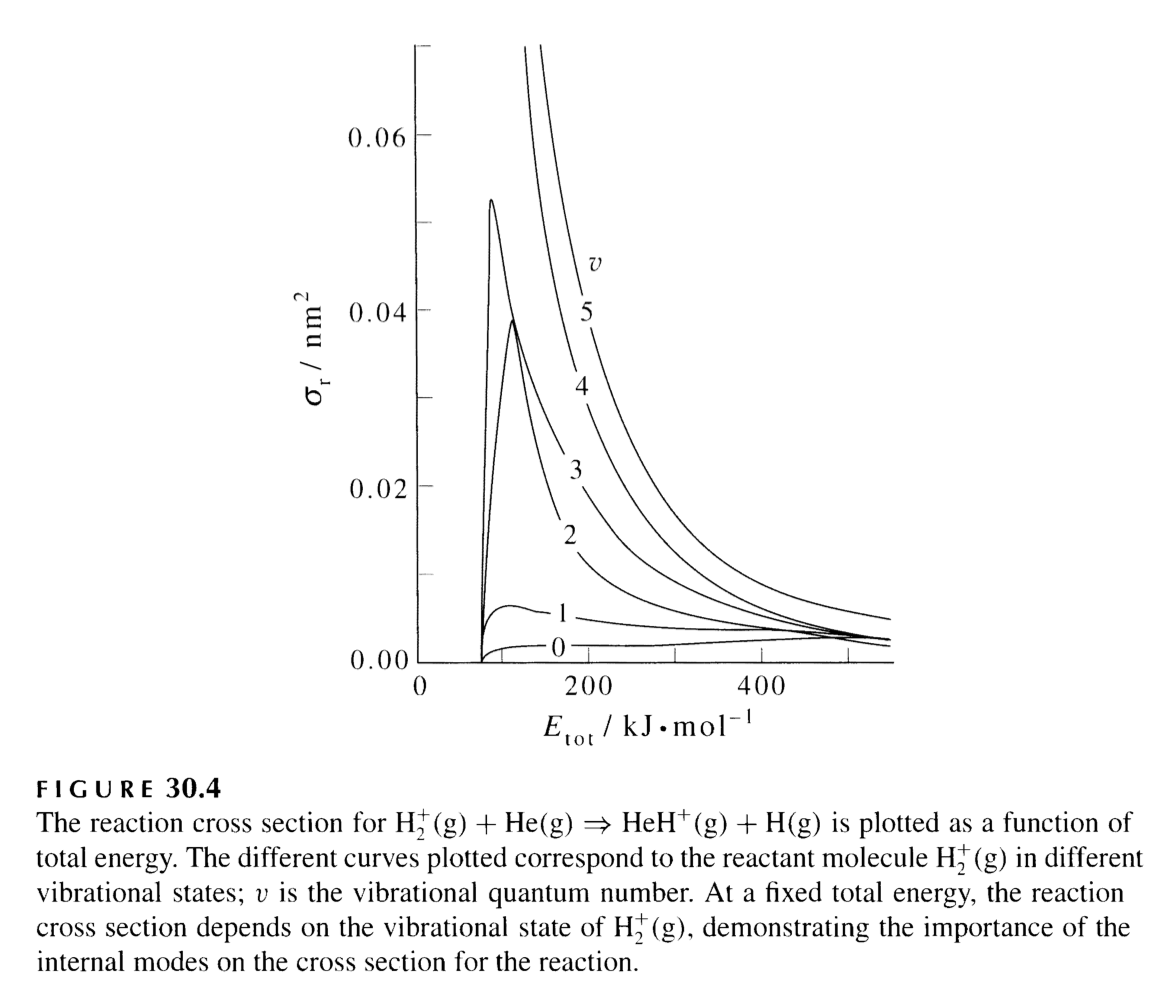I'm reading p.1238 of Mcquarrie's Physical Chemistry: A Molecular Approach textbook.
In the last line of the page, the author explains that the value of the reaction cross section in the constant total energy depends strongly on the vibrational state of the reactant. Of course, it explainsmeans that not only translational kinetic energy but also internal energy(such as vibrational state) contributes to the value of the reaction cross section values.
However, the book puts a limit on the 'constant total energy'. If both translational kinetic energy and vibrational energy contribute to the reaction cross section value, does the explanation in the book imply that vibrational energy contributes more to the reaction cross section value than translational kinetic energy?
If that's true, is there a way to explain the difference in contribution qualitatively? Or is it just a matter of quantitative differences?

